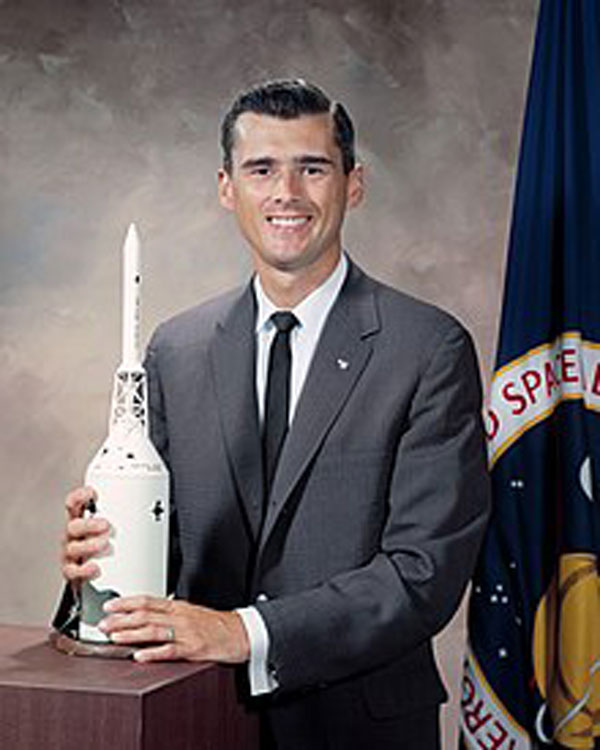
Roger B. Chaffee
Roger B. Chaffee
Roger B. Chaffee was born in Grand Rapids, Michigan on February 15, 1935. Young Roger's life-long passion for flight and aerospace began when his father, a barnstorming pilot, took him on his first flight. After graduating from Grand Rapids Central High School in 1953, Roger joined the Naval Reserve Officers Training Corps (NROTC) and attended the Illinois Institute of Technology, then transferred to Purdue University’s aeronautical engineering program. He earned his Bachelor of Science degree in aeronautical engineering, completed NROTC flight training, and commissioned as an Ensign in 1957. Roger accrued over 2,300 flight hours during his Navy career, including more than 2,000 hours in jet aircraft.
During the Cuban Missile Crisis, Chaffee flew eighty-two missions over Cuba, up to three per day. Roger applied to NASA in 1962 and commenced astronaut training in 1964. After arduous candidate testing, he was selected for the third pool of Astronauts in the Gemini program. In 1966, Roger was chosen for the first crewed Apollo-Saturn mission flight, Apollo 1, joining Gus Grissom and Ed White. The planned two-week space flight mission would test spacecraft and ground controls systems toward achieving the Apollo mission goal to land on the moon. Extensive prelaunch training and testing followed, with a scheduled launch date in February 1967. On January 27th, 1967, while the crew was engaged in a prelaunch “Plugs Out” test in the command module, a fire broke out in the cabin, tragically killing all three astronauts. The Apollo 1 disaster inspired the work needed to redesign future spacecraft and implement critical protocols to prevent further tragedies, but also reminded Americans of the hard work, bravery and sacrifice of those who join the U.S. space program. Perhaps most importantly, to this day the stories of Chaffee, Grissom and White have inspired new generations of young people to serve. achieve, and persevere.

